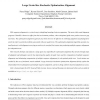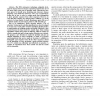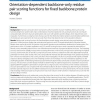729 search results - page 97 / 146 » Computing persistent homology |
BIBE
2006
IEEE
15 years 3 months ago
2006
IEEE
DNA sequence alignment is a critical step in identifying homology between organisms. The most widely used alignment program, ClustalW, is known to suffer from the local minima pro...
GCB
2003
Springer
15 years 3 months ago
2003
Springer
Clustering of EST data is a method for the non-redundant representation of an organisms transcriptome. During clustering of large amounts of EST data, usually some large clusters ...
RECOMB
1999
Springer
15 years 2 months ago
1999
Springer
An important goal in bioinformatics is determining the homology and function of proteins from their sequences. Pairwise sequence similarity algorithms are often employed for this ...
CIBCB
2006
IEEE
15 years 1 months ago
2006
IEEE
Abstract-- The DNA microarray technology, originally developed to measure the level of gene expression, had become one of the most widely used tools in genomic study. Microarrays h...
BMCBI
2010
2010
Orientation-dependent backbone-only residue pair scoring functions for fixed backbone protein design
14 years 10 months ago
Background: Empirical scoring functions have proven useful in protein structure modeling. Most such scoring functions depend on protein side chain conformations. However, backbone...



